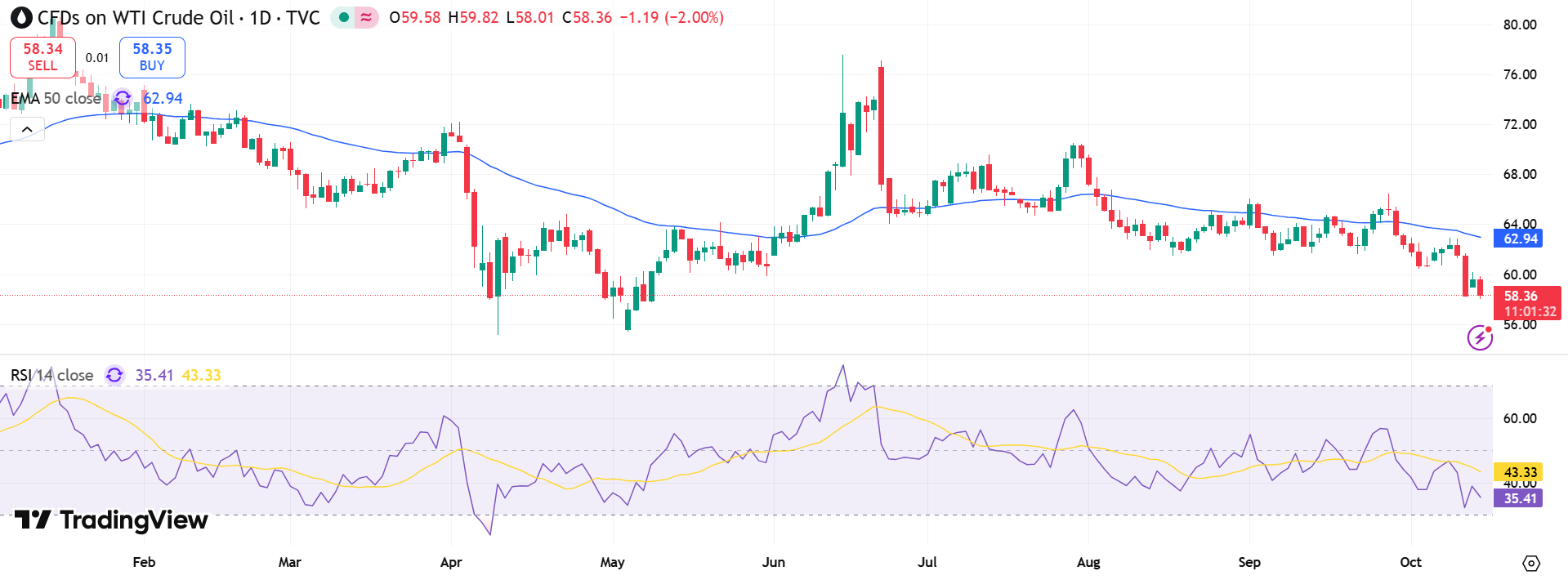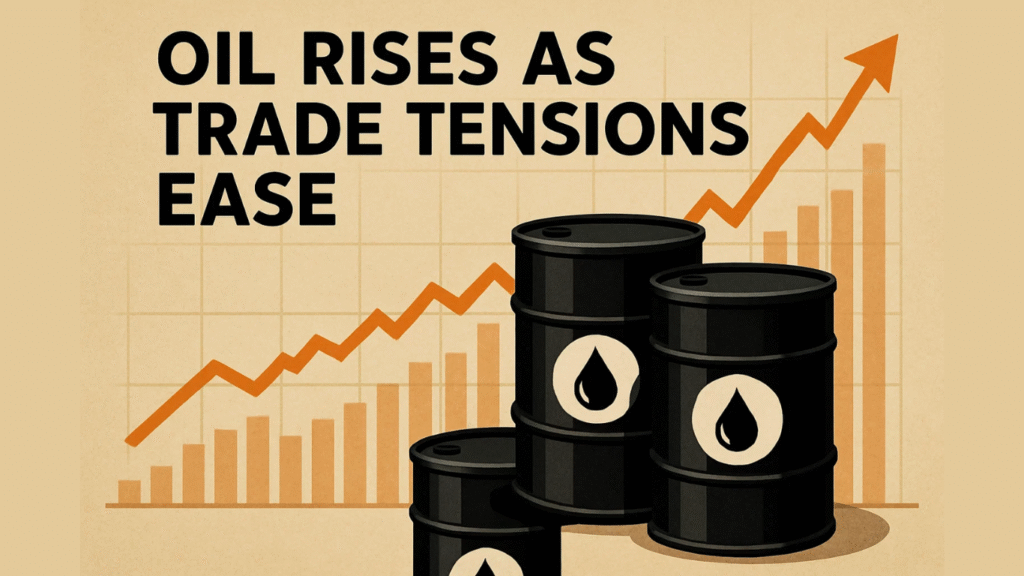Oil prices ticked upward Tuesday as hopeful signs of détente in U.S.–China relations improved sentiment about future fuel demand. Brent crude rose $0.22 (0.4%) to $63.54, while U.S. WTI crude also gained $0.22 (0.4%) to $59.71 by 04:05 GMT. In the prior session, both benchmarks had climbed—Brent by 0.9% and WTI by 1%—as markets weighed fresh trade developments.
Markets were buoyed by statements from Treasury Secretary Scott Bessent, confirming a meeting between Trump and President Xi Jinping remains planned in South Korea later this month. He also said both sides held “substantial communications” over the weekend. Traders interpreted this as a possible thaw in bilateral trade tensions, which often weigh on global growth and oil demand expectations.
Yet the backdrop is complex. Former President Trump had threatened 10% tariffs on Chinese goods in response to Beijing’s export controls on critical minerals. But he later softened his tone, posting that “Don’t worry about China” and signaling that the U.S. doesn’t intend economic harm. These mixed messages have left investors cautious but more willing to reposition into energy assets.
Supply Outlook and OPEC+ Strategy
Even as optimism returns to trade narratives, supply-side dynamics remain critical to the oil outlook. In its latest monthly report, OPEC+ projected the global supply shortfall in 2026 will shrink as member nations continue incremental production increases.
Recent data show that increased output from OPEC+ could counter some of the demand tailwinds, raising fears of oversupply later in the decade.
ANZ analyst Daniel Hynes noted the oil sector still faces geopolitical stressors, including China’s announcement of tariffs on U.S.-owned ships—many of which carry oil—and delays in global trade flows that have disrupted shipping bookings. These complications have contributed to last-minute cancellations and rising freight costs.
Despite the supply flexibility, some upside remains capped by Trump’s declaration of the Gaza war’s end—removing a major Middle East risk premium—and doubts about sharply higher near-term consumption.

Technical Drivers and Market Constraints
From a technical perspective, oil’s recent recovery is gaining traction, but resistance and structural headwinds may limit near-term gains. Traders are watching the $64–$65 range for potential pushback, especially if supply concerns intensify or global demand softens.
Support zones lie near $62 and $60—levels that may attract buying interest should sentiment waver. Market watchers warn that any renewed risk-off environment or signs of oversupply could drag prices lower, potentially toward the $55–$60 range.
In sum, Tuesday’s gains reflect a cautious return of optimism as markets rethink worst-case trade scenarios. But supply increases and geopolitical uncertainty ensure the path ahead remains volatile.


